Bombus Morrisoni II Ghost
I was not happy with the first Bombus Morrisoni so I made more. The first is swimming in violet blooms
Bombus Morrisoni III
Bombus Morrisoni III ghost
Your Custom Text Here

Bombus Morrisoni II

Bombus Morrisoni II Ghost
I was not happy with the first Bombus Morrisoni so I made more. The first is swimming in violet blooms

Bombus Morrisoni III

Bombus Morrisoni III ghost

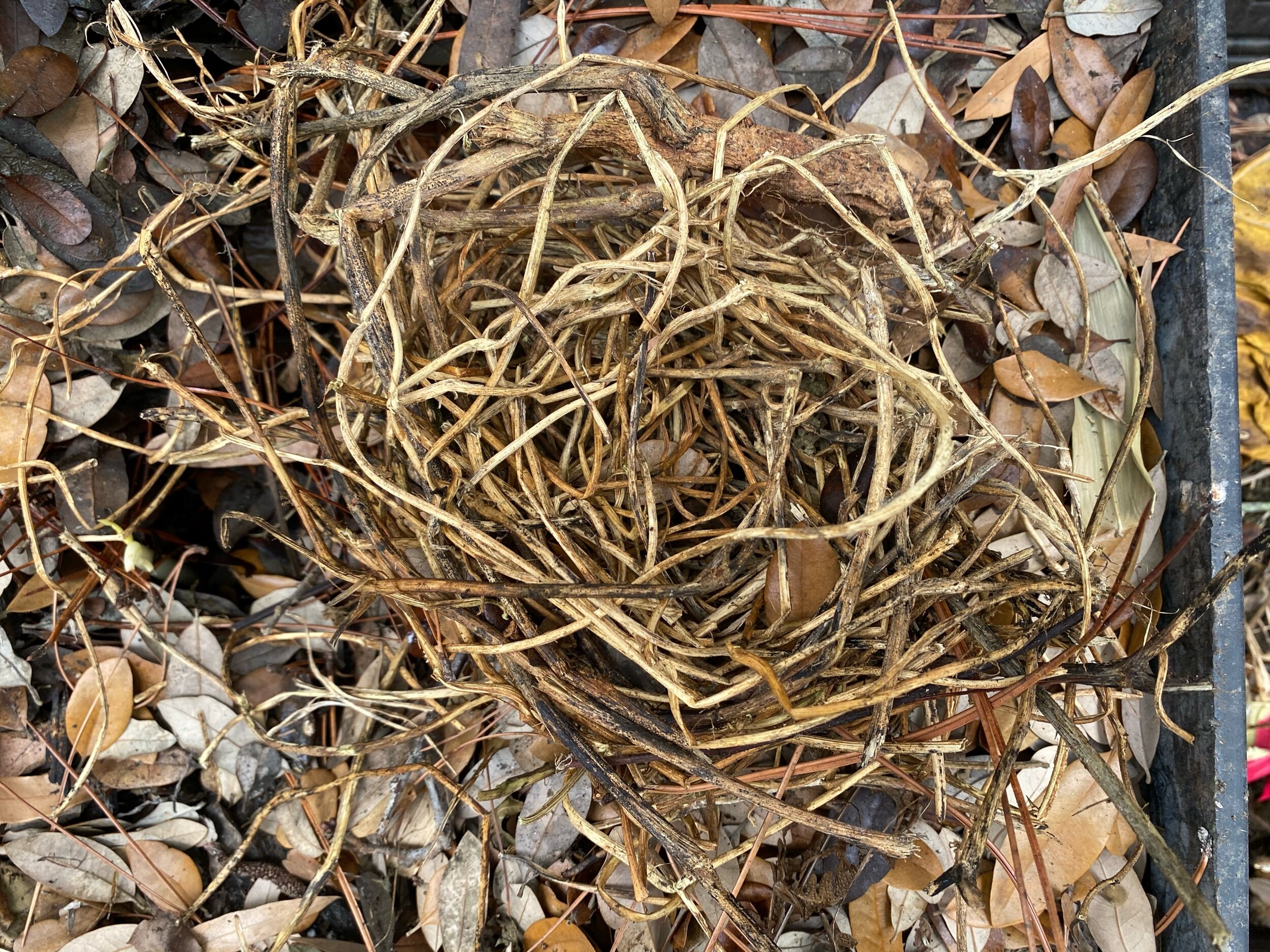
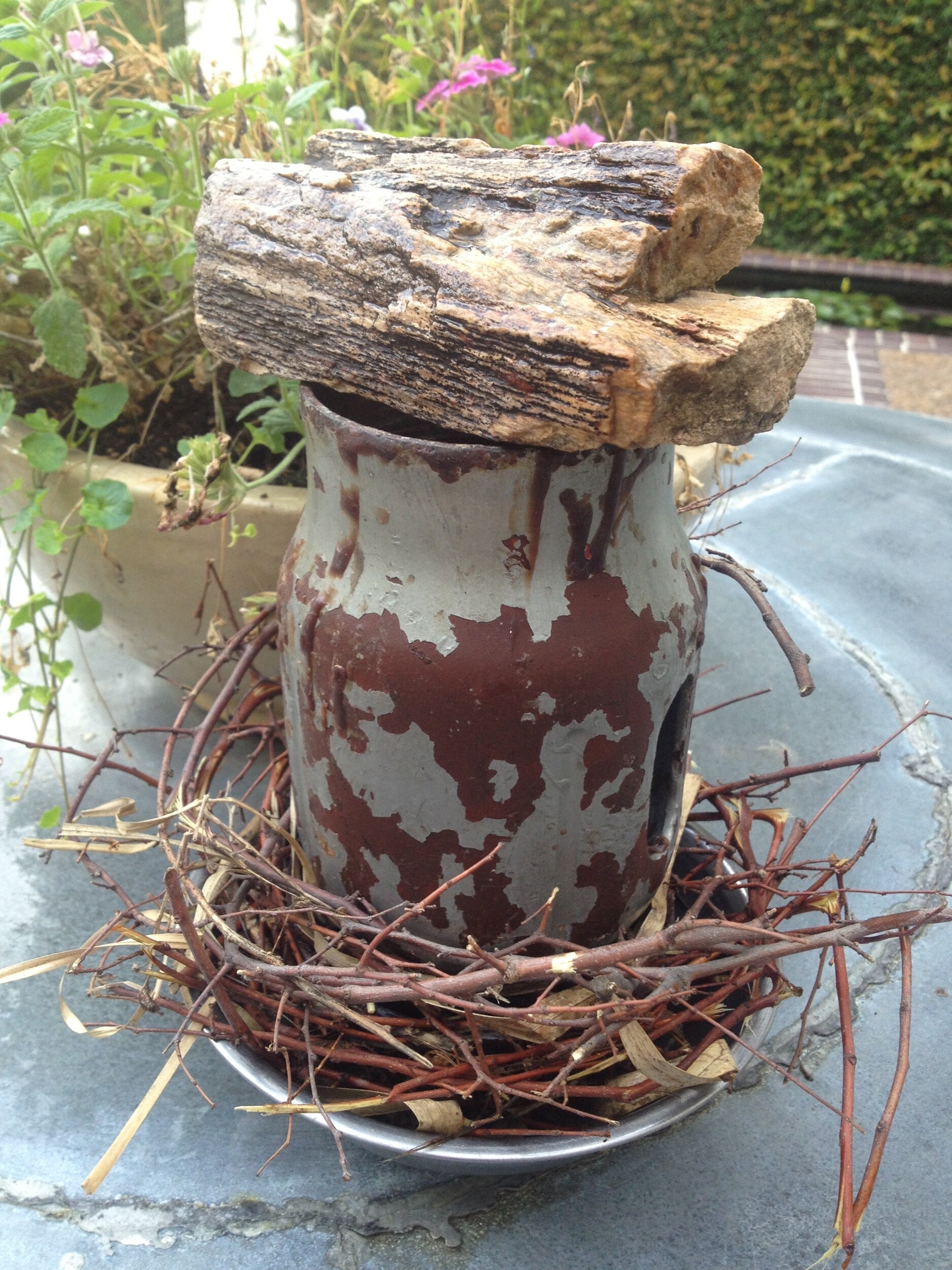
Shaping the dried organic matter.


Creating a system to get bronze into the sculpture.
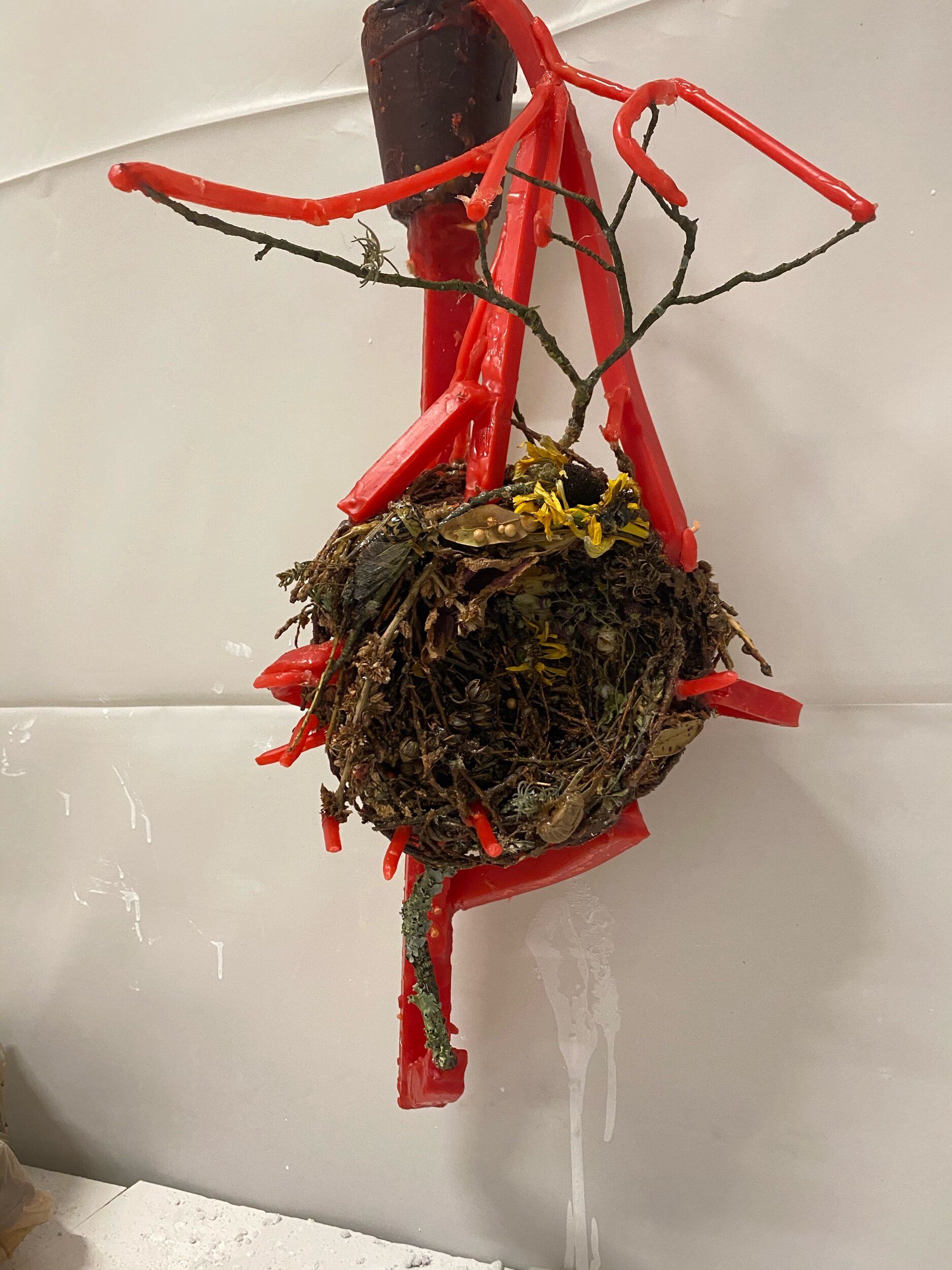
The best with the wax sorue system.
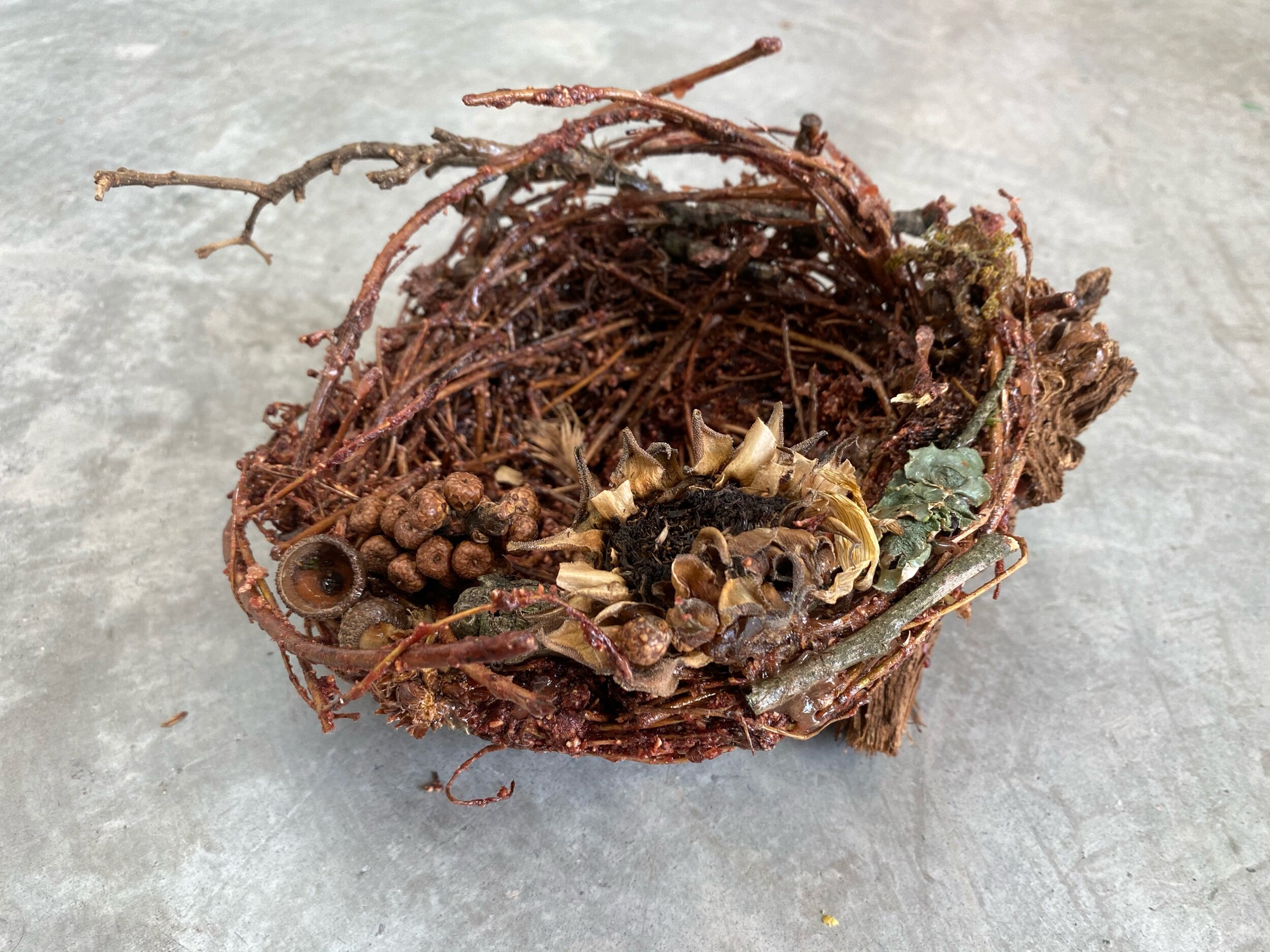

The sprue system after the first dip in slurry.
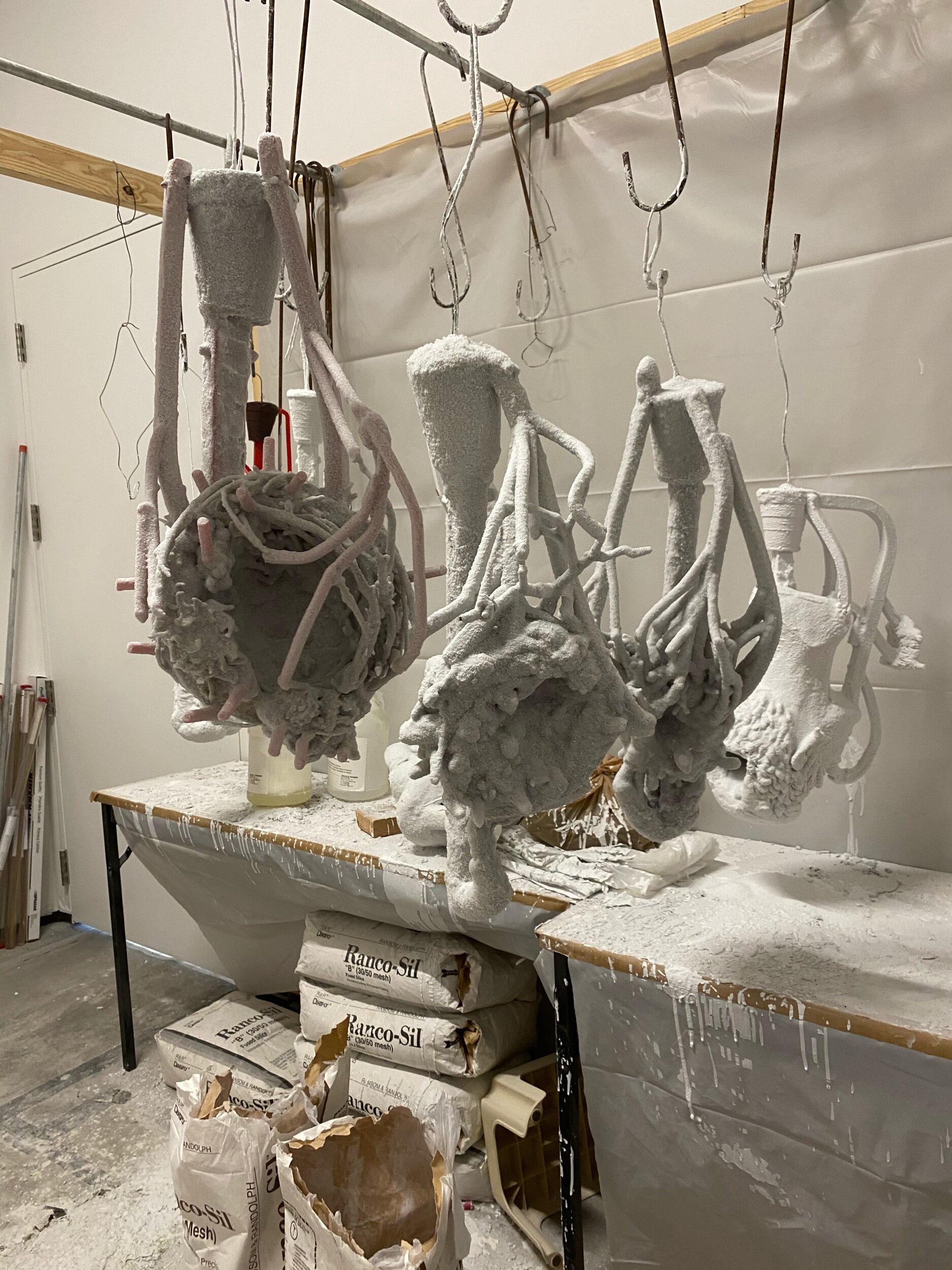
All three pieces after several dips.
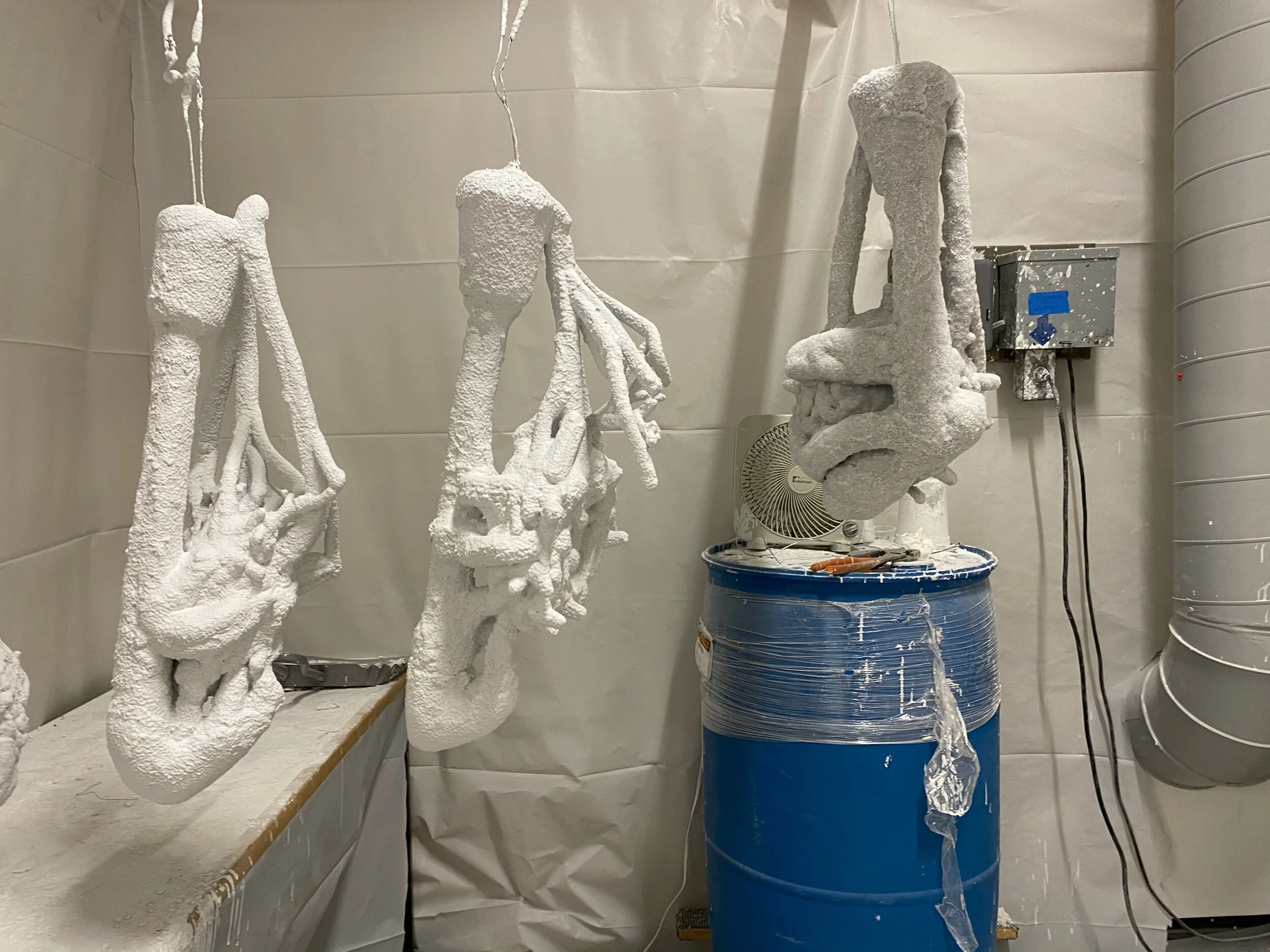
Drying after the last dip to build the shell.
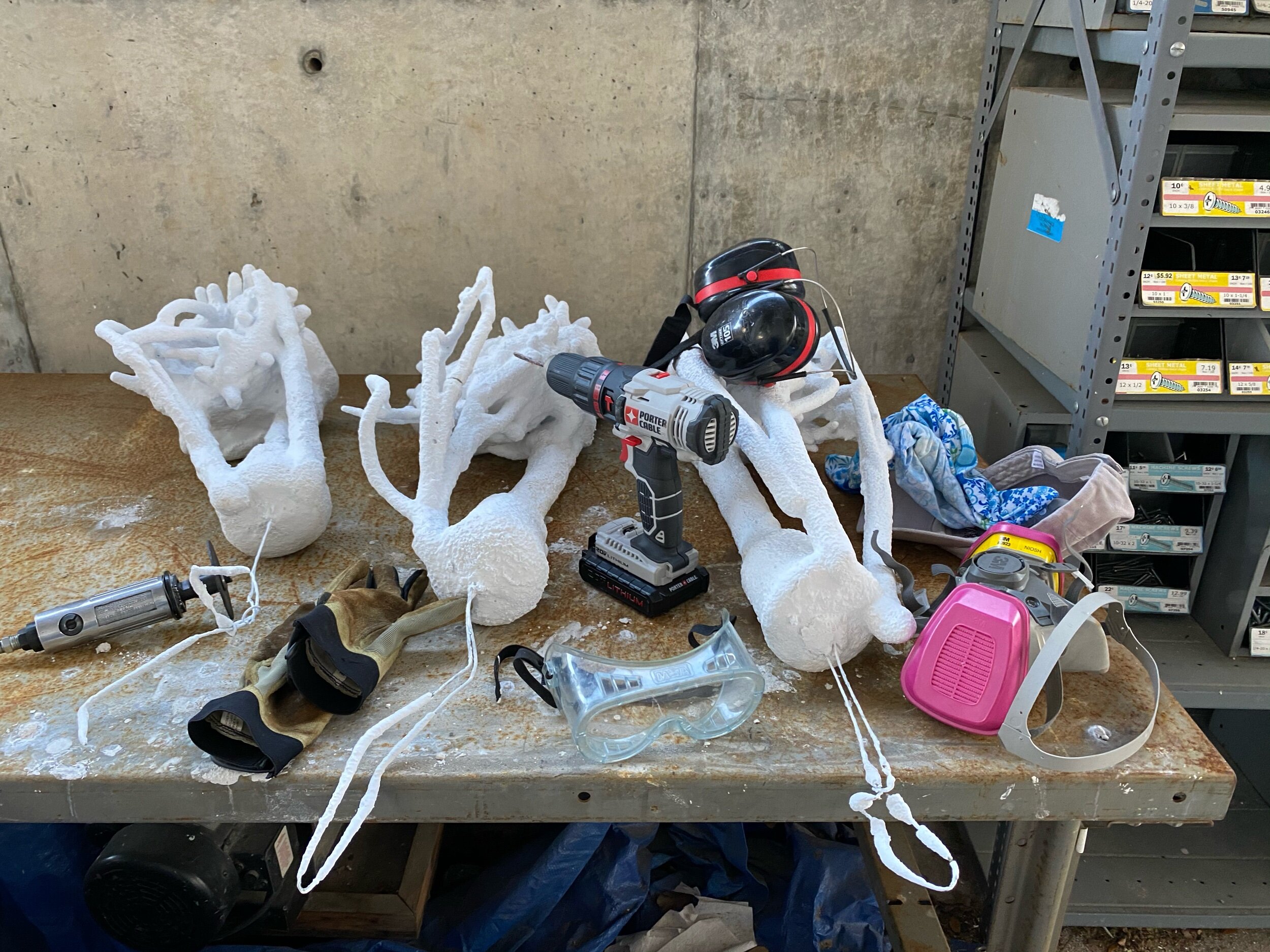
My tools to cut off the top of the cup and blind vents. The wax will drain out if the tuop of the cup. I also drill holes to keep the shell from cracking as the wax expands in the furnace.

After cutting the cup and blind vents.

The pieces at legacy as Victor is breaking off the shells.

The three nests and some small bronze casting to use for studio visit gifts.
Nash Baker is my art photgrapher, Nash lost his photography studio to a fire studio during COVID. I will wait to have these pieces photographed when he is back in operation.
Early last winter I was at the Herman Park family garden- it is a jewel of a garden. They had everything; yummy plants, honey bees, fruits, and veggies galore. They had almost everything, I say almost- they did not give a native bee condo.It was my pleasure to gift to the Herman Park family garden an air, Bee, And Bee. It is awesomely installed right next to the berries. I also have them a bunch of reeds full of blue orchard bees. I hope their air bee and bee outs out the no vacancy sign soon. My vacant little bee condo houses lizards—no bees in my area. :(

Herman Oatks newly installed air bee and bee.


Zoomed in

This gives you an idea how tiny these are.

Bombus dahlbomii Thread on denim

Bombus dahlbomii I 30” X 44” watercolor monotypes

Bombus dahlbomii Il 30” X 44” watercolor monotypes
Earlier in the year I sent the below letter to my City council representative. She is very supportive and agreed to review the Cities landscape ordinance and bring it up to date to reflect our current environmental situation as it pertains to native bees. The bees that are endangered, the honey bee is not endangered. I anticipate that with the health scare our city is facing our bees have been put on the back burner. Since the bees can’t wait for the c virus to die down, I decided I need to act. . Below is my letter. If you agree with me we need to all become gorilla artist and install texas wildflower seeds in every vacant spot we can. See my below post for how to be a gorilla artist and save the Native bees. If you want something done do it yourself. I still have hopes our city will reimagine our urban landscape and save the bees. #bees #houston #cindeeklementart #gorillaart Scientists predict that without pollinators, human life can only continue for four years. In 2017, the U.S. Fish and Wildlife Service listed the Rusty Patch Bumble Bee on the endangered species list. The campaign to list a species as endangered is lengthy and complicated. With this system it is difficult to gauge how many species are actually endangered. Bees are responsible for pollinating 75% of the world's flowering plants; they are crucial for the production of most fruits, nuts, and berries – that our agriculture depends on pollination by bees. Rural areas are highly impacted by the unanticipated consequences of our industrial agriculture’s dependence on chemicals that weaken bee’s immune systems. Urban bee populations can be more diverse than in rural areas. Researchers are finding in cities such as Chicago, Berlin, Berkley, and Melbourne that have reimagined their parks, neighborhoods, city centers, vacant lots, street medians, and rooftops planted with native flowers, grasses, and fruit, and vegetables support healthy, vibrant wild native bee populations. There are four thousand native bee species. They pollinate over three hundred times more effectively than honey bees. For example, A single female Leafcutter Bee visits 100,000 plus blossoms per day whereas a honey
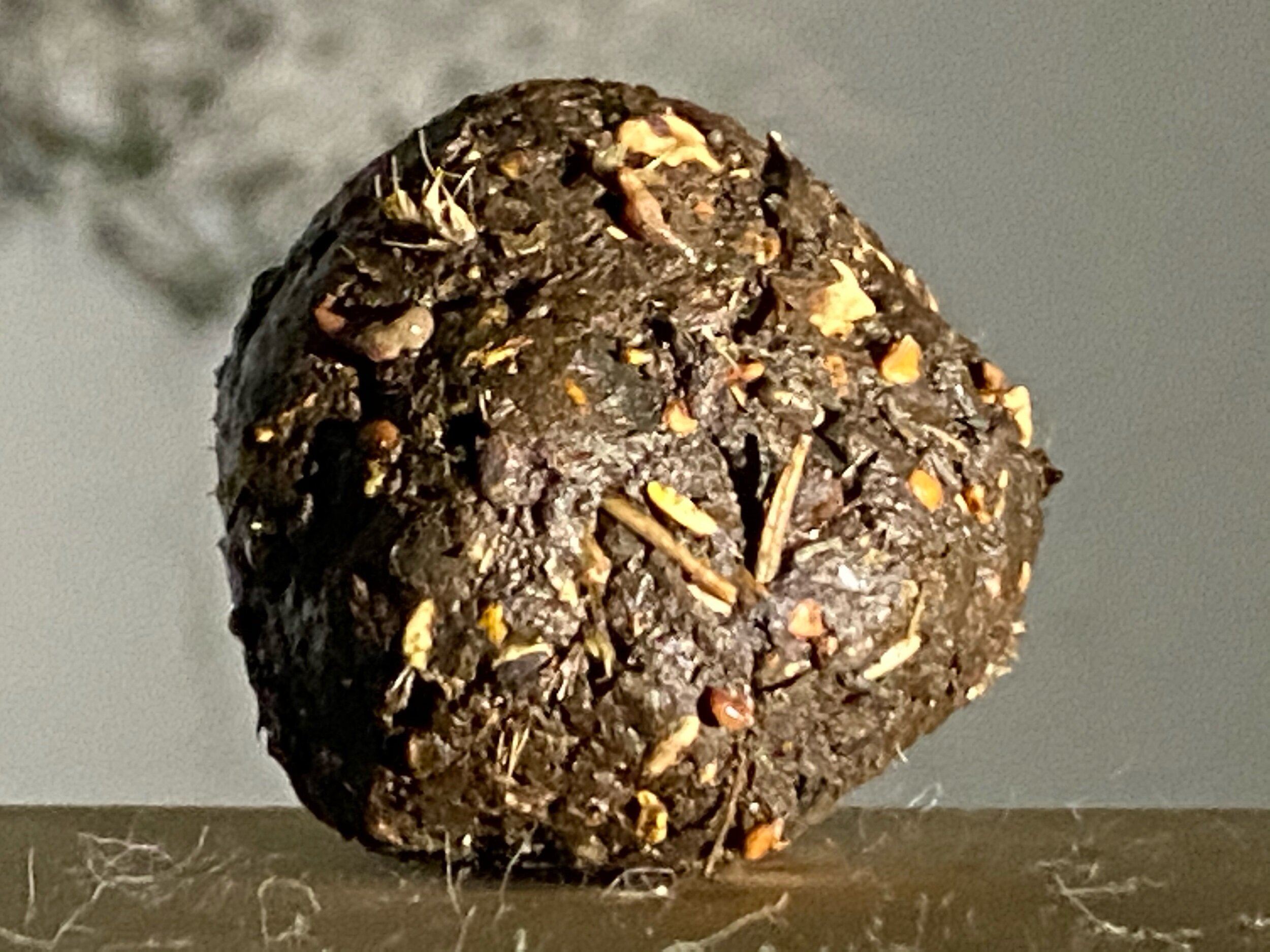

Mix native wild flower or grasses seeds with soil. I am using a handful of compost from my bin.

Wrap it up so you can carry it and not get your hand muddy.

Find a place to throw it that will not be mowed. I picked behind this chain link fence, in the parking lot of my art studio.

Here she lays.

A closer look at - native wild flower seed bomb.

Three weeks later.
There are so many weeds sprouting up it is hard to see my seed bomb. But I see it. It does not have any blooms yet but my fingers are closed it will.
Since we are in quarantine I decided at this time to not make a bunch of bombs to share with others. I would love to share but I am erroring in the side of caution. i put the rest of my wild flower seeds in my flower beds that I needed more plants.
The last almost three weeks have been emotionally challenging for everyone. That said I am very fortunate that no one close to us is sick and for that I am very grateful. I do have friends who have very sick people in their family. It is hard to hear their pain. I tear up just thinking about how many people this second are worried about next breath. I am trying not to think of it- it is too painful.
I am trying to keep myself busy and stitching is very therapeutic. I am free stitching bee habitats onto a stained jean jacket and getting a lot of dog walks in. We lost our oldest male labrador Goose to kidney failure last week. He is missed. The timing was bad as he brought us a lot of joy.
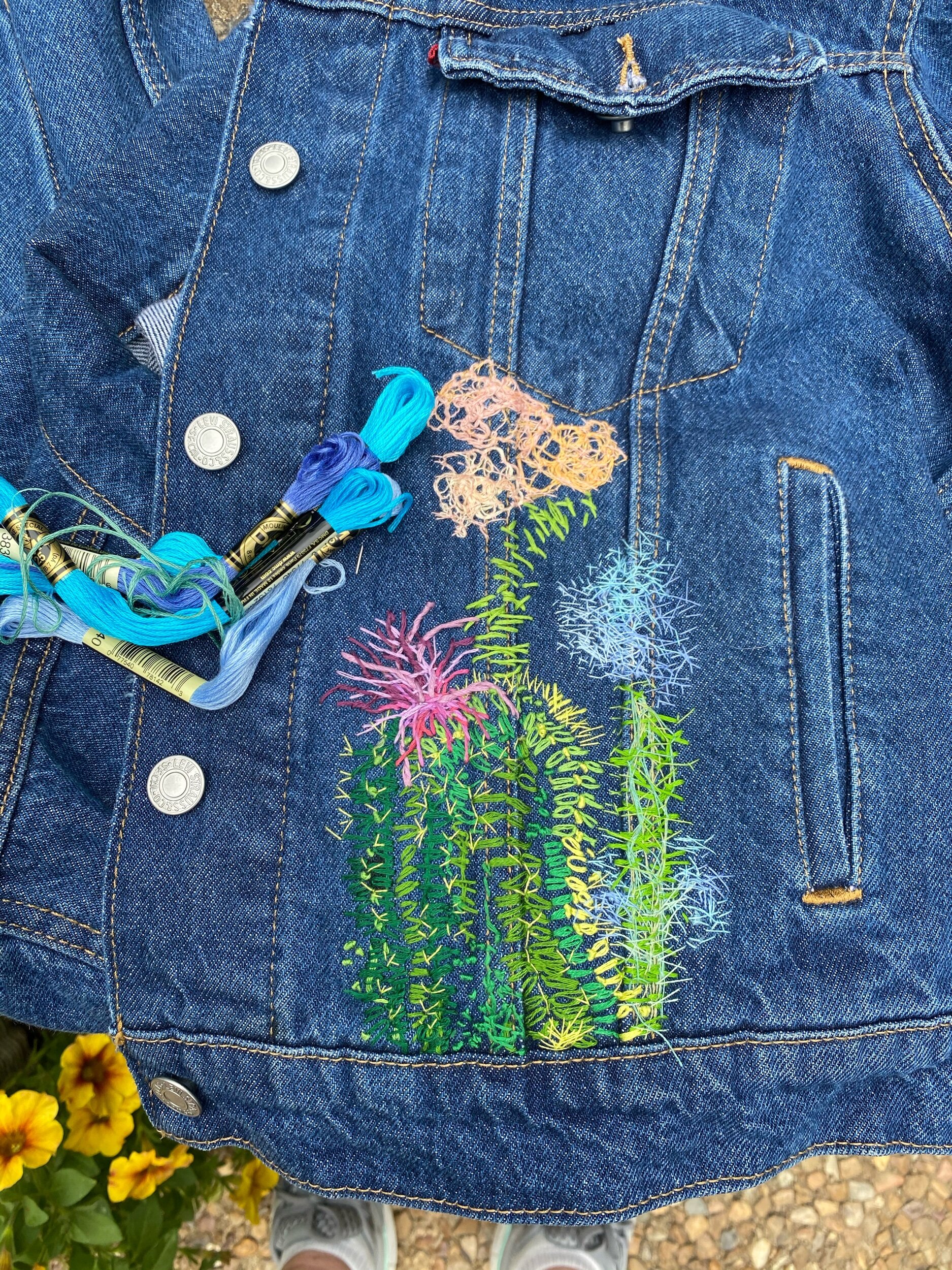
The jean jacket

My sweet Goose watching me work in the yard a few years back.
This summer it came to my attention that the River oaks Garden Club was having a luncheon with a bee theme. I quickly reached out to their luncheon Chair and she connected me to their environmental chairman. They came to my studio and we talked about the 4,000 wild bees species and how most people only know about honey bees.
Long story short I was invited to talk about the bees at their annual Azalea trail fundraiser. They were Slammed with people. I spoke none stop on Sunday from 11-5.
In addition the environmental chairs decided to work the native bee (the endangered bees) story into their both at their garden show this spring. It is organizations and ladies like these that can save the wild bees.


Image courtesy of Janna Webber
Studying our past is an incredible learning tool. With that in mind, I found the below article about the oldest bee fossil.
https://www.livescience.com/amp/4255-oldest-bee-fossil-creates-buzz.html
https://tmm.utexas.edu/sites/default/files/Amber%20Activity%202019.pdf
Coincidentally I just made a mold of a fossil for personal reasons. Reading this article is inspiring some new ideas that will involve the fossil mold and bees.

Osmia Texana - The Berry Bee This frantic bee is about as big as a housefly. If you look at one with a macro lens you can see they are a beautiful metallic blue. The underside of their abdomen is a fuzzy pollen mop. These pollen magnets are the perfect shape to collect pollen from blueberries, raspberries, strawberries, melons, and veggies, to name a few. They are not picky pollinators.
A single Texana Bee frantically visits 20,000+ blossoms per day, whereas a honey bee visits 50-1000. They are not- aggressive and non-colonizing, solitary bees.
They emerge in the spring and have an average pollinating season of 6-8 weeks, after which they die. Their offspring will hibernate over the winter and emerge the following spring.
They are found on both the central and North American continent.

Watercolor monotype 44” X 30.”

The ghost
30” X 44” Lenticular in In the words of Paul Mc Cartney and the Beatles in “Let it Be” I think of Mother Mary as mother nature. Some day I would like to have a children’s choir sing “Let it Be” with my shadow piece,” World of Hum.”. But for now it is Spotify and a lenticular in my studio.
Things are now going smoothly maybe too smoothly. All the work I did this summer is paying off.
ps. I now have the equivalent of another silo full of work in my studio………. bursting at the seems. Anyone need a keystone animal environmental installation?


This summer, I made 7 sections of kinetic sculptures, approximately 6’-10’ long X 36” in diameter, anticipating that I would not use all of them. Now that I am in the space and see what the light does on the convex wall, I think I will use 4 of my favorite sections and add 4 extra lines dropped for smaller pieces that will help integrate the 4 sections into one piece.

Experimenting with the placement of the light.

Experimenting with the shadows with the light in a convex wall.

The walls are not "museum pristine", they show their age, I am not bothered, it is a grain silo and I ❤️ It.

Each small element bagged separately making bouquet of bee cocoons

Making my own wardrobe style boxes.

My pieces hang from the top of the boxes. I needed something to support the top of the box. Southland hardware yard sticks were the cheapest thing I could find. I think they will work.

My sculpture wardrobe boxes have doors.

The pieces in bags make awesome amnion shadows

7 boxes ready to go.

Behind and attached to the Silos at Sawyer Yards

The lobby of the SITE Gallery Houston with the mechanicals of the grain silo in place. Just the coolest


Green marks the spot

In May I started seeking a space to exhibit new environmental, 4D kinetic sculptures. I hoped to use this new work as a start to an art installation inspiring conversations about topics I am very passionate about; the unexpected consequences of forcing natural processes into an industrial model and the complex relationships between humans, plants, and animals.
The stars aligned in July when Sculpture Month Houston’s founder and curator, Volker Eisele, invited me to be one of the 19 artists asked to create a site-specific sculpture in the historic Success Rice Grain Silos behind the Sawyer yard’s artist studios. In the 50th anniversary year of man landing on the moon, this year’s exhibit title is Outta Space from the 2012 Van Halen album A Different Kind of Truth. Outta Space will combine two curatorial themes: one features work focused on environmental degradation issues and the other focuses on interpretations and explorations of Alternative Worlds as envisioned in the fantasies of the artists.
I have passionately committed myself to this installation every day since July. My passion comes from spending my early years on a farm in west Texas, from my concerns regarding industrialized food and its effect on our health, from my love for historic buildings and, most importantly, from my desire to make an impact on the return of our most important keystone species.
As a site specific installation artist my aspiration is to create a piece that is unique to the silo’s space and true to my work. My silo is a circular space constructed from cinder blocks, 18’ in diameter and spans 20’ in height. It has, in the center of the space a 10’ tall funnel suspended from the ceiling. There are a few old, large light fixtures, conduit runs vertical and perpendicular on the walls and there are three entrances to the space. I have three weeks to install the work that I have assembled to date. My mantra as an artist is “if I am not nervous to take on a new project then I am not stretching myself”. I am slightly anxious, yet happy to embrace the butterflies and honored to have my name listed among this year’s SMH artists.
In celebration of the opening there will be food trucks, a bar and music provided by Chapel In The Sky with projections by Michael Walrond - SHDWSOFDUST.
Public Opening for the Exhibition
SITE Gallery Houston,
1502 Sawyer St. Houston, TX 77007,
(The multi-story building behind the artist studios facility).
https://glasstire.com/2016/11/04/the-problems-and-rewards-of-houstons-silos/
https://glasstire.com/2017/10/30/a-conversation-about-art-and-the-silos-on-sawyer/


Without bees we would not have cucumbers or watermelons
Today harvest at the farmers market.
7 days left to rip and wrangle rusted wire cloth, then delicately stitch the wire fragments into biospheres of frail and vulnerable abstract wild bees and organic shapes. Then coat hydro stone and cast shadows, to kinetically unveil the unintended consequences of forcing natural processes into an industrial model. Then pack, transport, unpack, install for 21 days, and open........ find more locations to install......... rinse and repeat.


